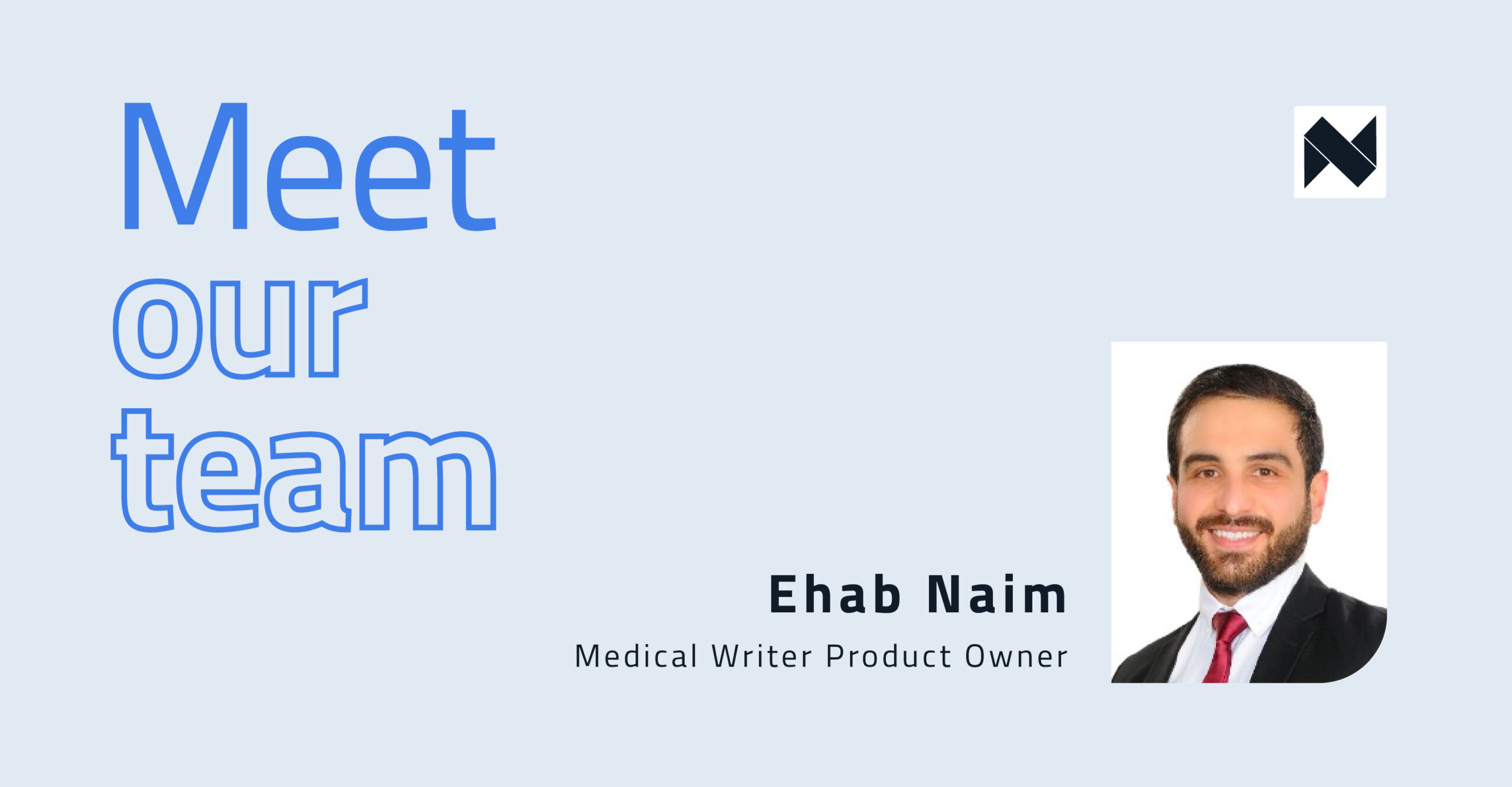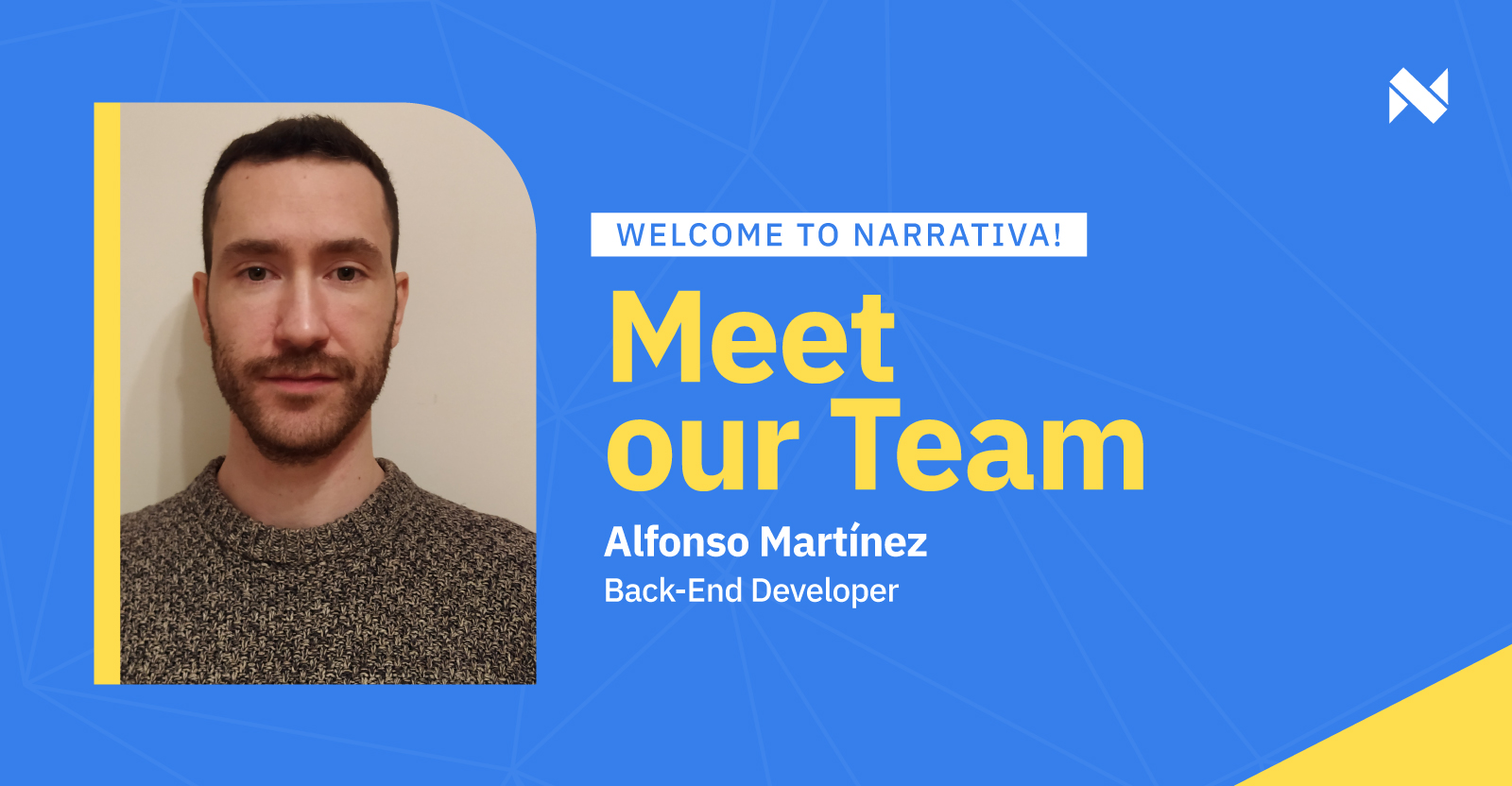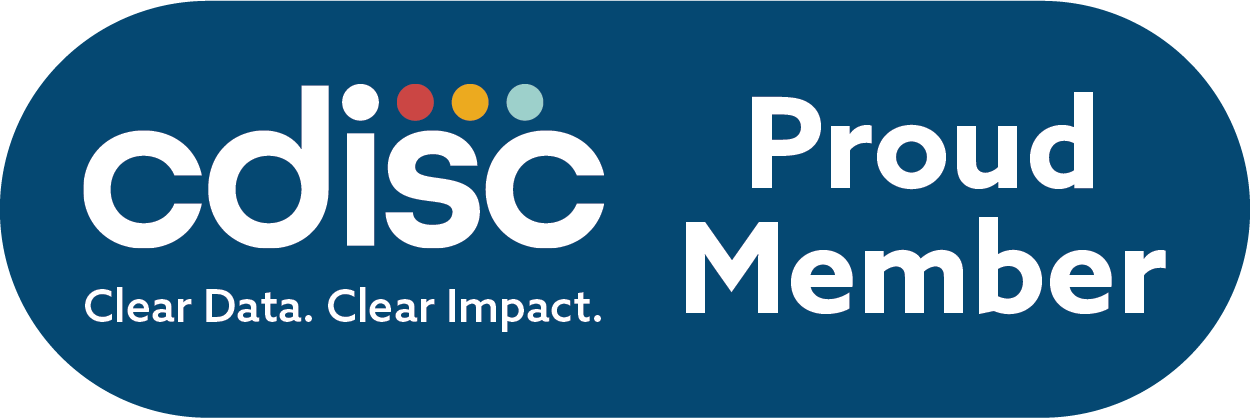September 16, 2021
NLG empowers Work-in-Progress reports for the AEC Industry

By Sofía Sánchez González
The hope for most new technologies is to allow workers to focus on high value tasks while tech tools complete the somewhat mundane and repetitive tasks. The Narrativa team is utilizing artificial intelligence (AI), machine learning (ML) and natural language generation (NLG) to solve a broad range of workplace challenges for the AEC (Architectural/Engineering/Construction) Industry with the aim of automatically completing low value tasks but also providing high value insight from data.
NLG summarizes data, data tables and graphs into a textual summary, removing the risk of misinterpretation of data and speeding up the process of creating an accurate summation of what the data is conveying to an analyst or project team. Research has shown that textual summaries can be more effective than graphs and other visuals for decision support and that computer-generated text (i.e. NLG) can be superior to human-written text.
NLG can greatly empower Construction Project Managers
For this article, the primary topic will be focused on work-in-progress reports or what are commonly referred to as “WIPs”. The WIP report is essentially a project schedule document that tracks active construction jobs of contractors and defines whether the project jobs are over-billed or under-billed.
First and foremost, the Narrativa team believes that NLG can greatly empower Construction Project Managers whom in turn empower finance and accounting teams at their companies. NLG can help Project Managers (PMs) explain the numbers and provide further context to the projects. A cost-to-complete estimate is what many departments of the company want to know but it needs to be exact. The estimate determines where the job stands right now, which informs if the time to completion is on track and will be completed to requirements and specifications. Subsequently, PMs must have accurate knowledge of real-time costs and the ability to explain spreadsheet numbers and models.
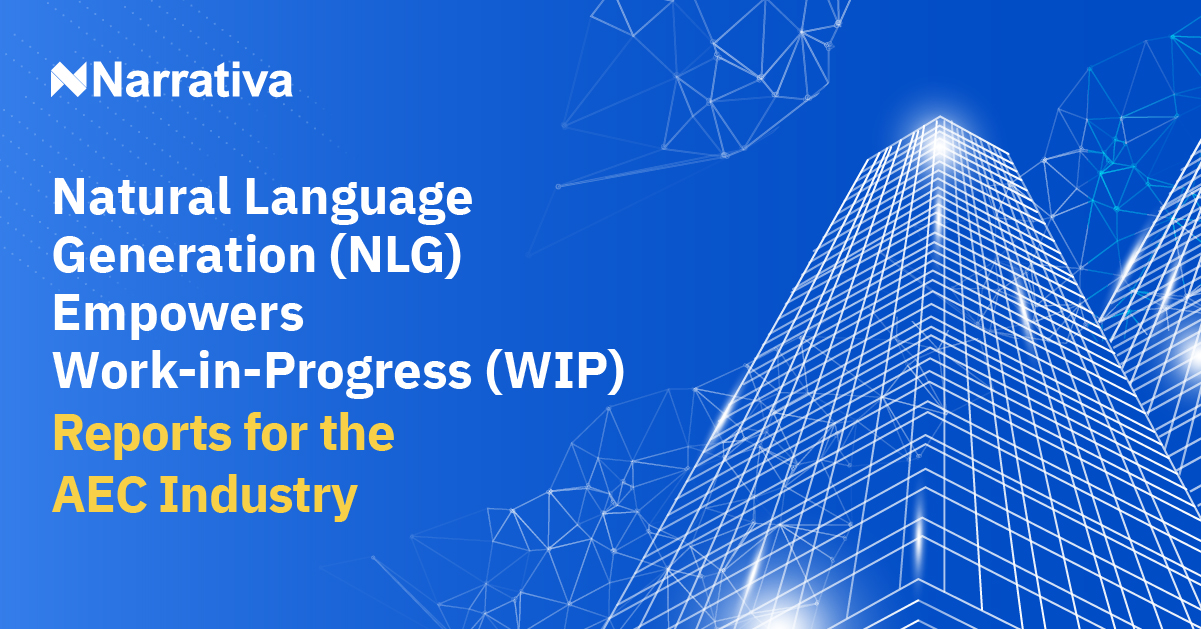
NLG for the AEC Industry
NLG can quickly empower these PMs by producing frequent and hyper-accurate reports because it explains the numbers and the state of a project with textual summaries and a story narrative about how the project is developing. It is common for an excel spreadsheet to indicate that a project may be 40% complete, but a PM may look at the whole project situation and know that the reported 40% completion rate is not correct because the PM has more contextual knowledge of the whole project. Using AI and NLG to produce these textual summaries enables good communication and highly valuable conversations amongst various teams within construction companies and their financiers.
First, let’s review what WIPs are and some best practices. WIP reports are essential for project managers, accounting, and finance teams to effectively manage and observe all key progress indicators (KPIs) on a project. Proper WIPs will identify issues before they become bigger problems and monitor red flag issues. Effective WIPs and their project managers collectively provide explanations that produce insight on how to deliver their projects on-time, on-budget and as-described.
NLG summaries of excel data and financial numbers will make WIPs more effective. Best case examples of WIPs will identify the state of over-billings and under-billings such as:
Over-billings:
- Billings, more than actual progress
- Customer is funding project costs
- Adjustment artificially lowers income which in turn lowers taxes
Under-billings:
- Billings, less than or behind actual progress
- Contractor is funding costs
- Adjustment artificially inflates income which in turn increases taxes
To complicate matters more, WIPs do not have a universal format. These reports vary from company to company to fit an organization’s specific set of needs. However, WIPs generally include the contract amount, estimated costs, costs-to-date, the percent complete, billed revenue, earned revenue and over/under billings.
Here is an example of a WIP report and an AI powered NLG summary of that WIP report. As you can see, the NLG summary explains the report with context and insights as to the deeper meaning of the WIP report. Having PMs, accountants and finance analysts receive these NLG summary reports is invaluable.
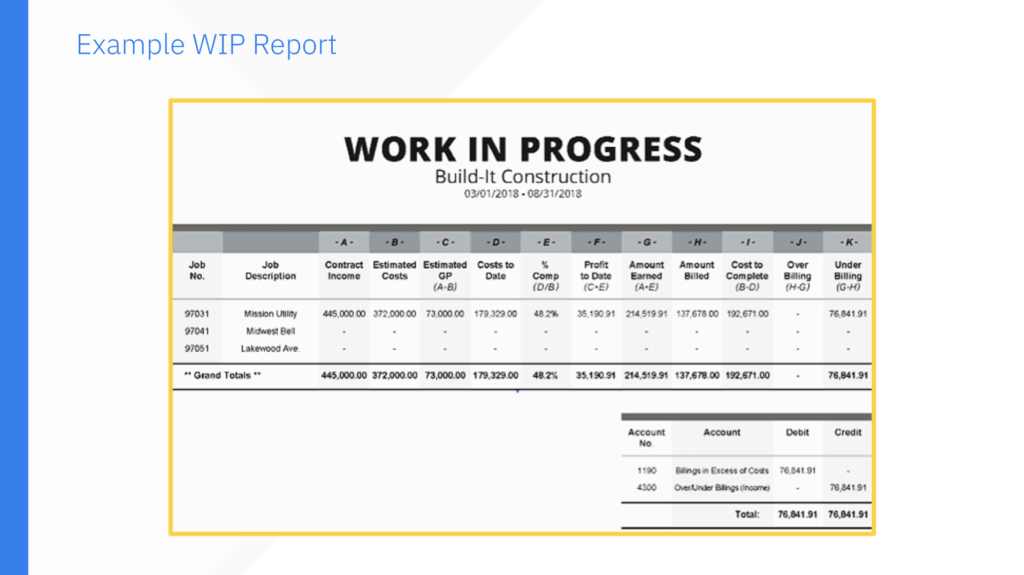
Example WIP Report
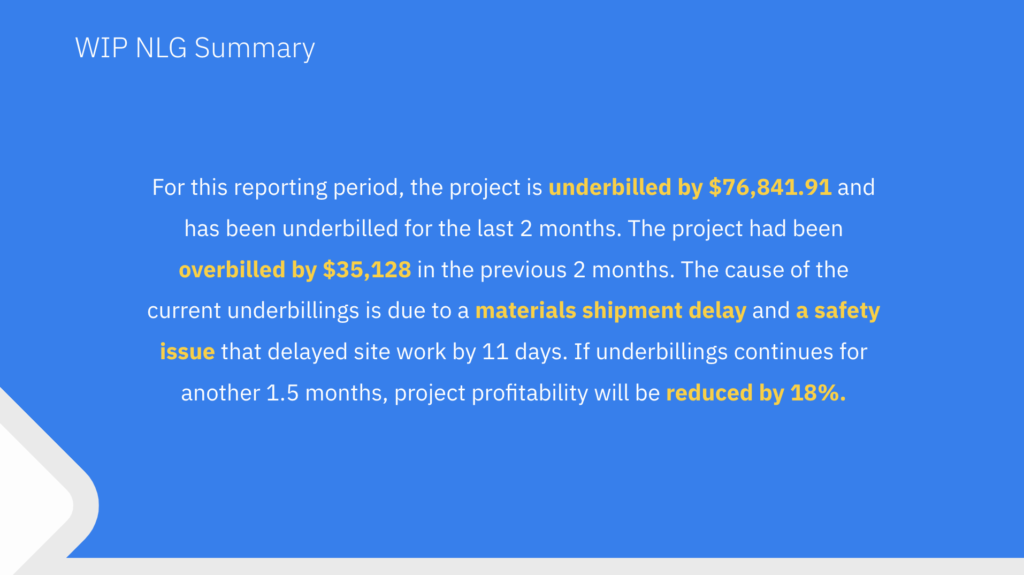
WIP NLG Summary
How does an organization improve their WIPs and utilize an NLG platform for their business?
The Narrativa team suggests that companies utilize a process that addresses key milestones to achieve. These milestones should be focused on specific types of deliverables and a commitment to execute the process in order to enhance the efficacy of WIPs. Below is a graphic that outlines the three basic phases of implementing WIPs and NLG.
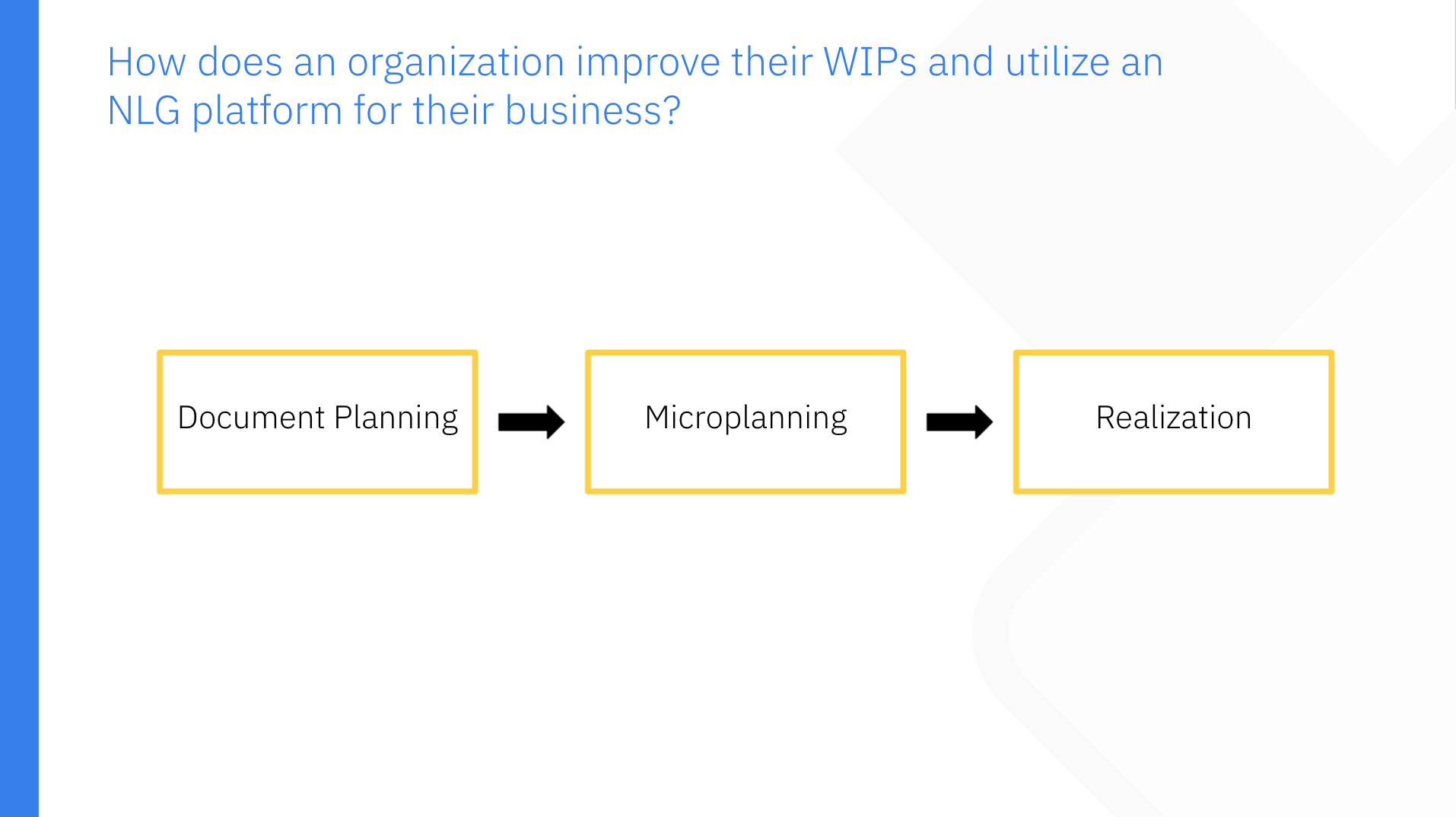
Document planning – Microplanning – Realization
1️⃣ Document Planning
The first phase, “Document Planning”, is focused on determining the “problem to solve”. These problems may vary but a general theme may be information gaps and receiving information at specific times throughout the lifetime of a project. It is important to plan out what content and reports should be produced and how this new content will change the organization.
2️⃣ Microplanning
The second phase, “Microplanning”, is focused on identifying the types of language, industry terms and keyword indicators that must be used within the content that will be produced. In this phase, companies should be discussing actual costs versus the budget, as well as the billing progress. You’ll also want to review the status of past change orders. This is also the opportunity to compare the PM’s process in calculating the percent complete estimate with accounting’s calculations. Regarding WIP reports, the team should identify:
- Any under-billings, since these are typically undesirable
- Completion delays that don’t have accompanying change orders
- Overdue receivables
- Identify unsigned Certificates to Occupy (COs) on completed work or unapproved COs
- Any substantial difference between the field’s and accounting’s percent complete
3️⃣ Realization
The third phase, “Realization”, is focused on converting this content and reporting requirements into real text. These text narratives will be produced during this phase and evaluated by PMs, accountants, and financial analysts. Within the NLG development phases, this phase will produce a corpus, which is a body of written work that will be produced, tested, and optimized in a learning environment within a self-learning AI platform.
At the end of this process, companies not only improve their WIPs, but also utilize NLG to align the entire organization on the Cost-to-Complete at every stage of a project on all their projects. This ensures profitability, lower tax consequences and most importantly, will deliver a quality product to win repeat business. And if a company already has a BI system in place to collect the WIP data, then our system is easy to integrate and our text reports will enrich it.
Although we have focused primarily on how NLG can improve and empower WIP reports for construction and engineering companies, there are in fact many NLG applications for various other types of reports that address key performance indicators. Many of these KPIs can be included in executive data dashboards that can be enhanced by natural language text summaries.
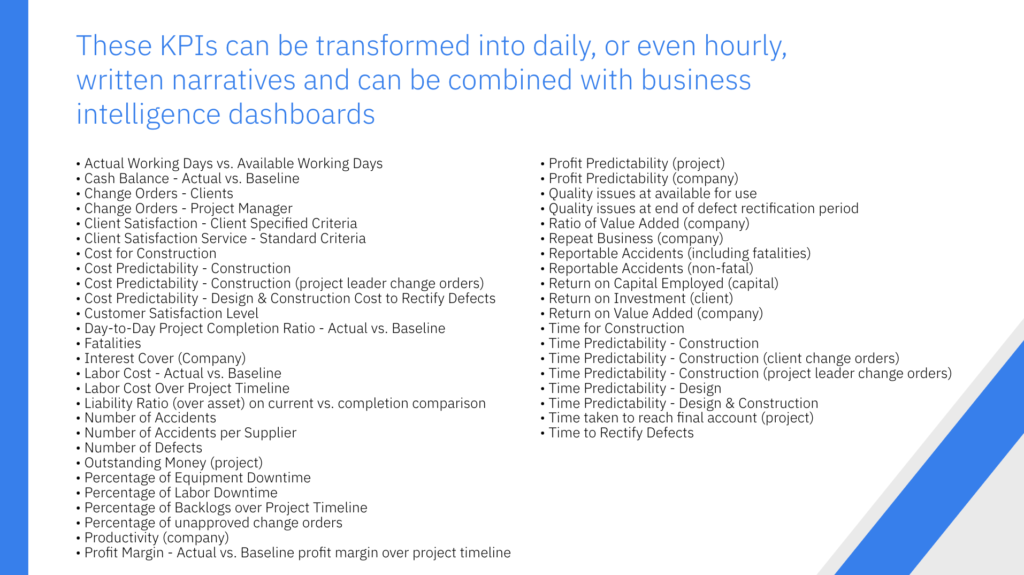
KPIs transformed in written narratives
Contact us to know more about our solutions for the AEC Industry!
Share


